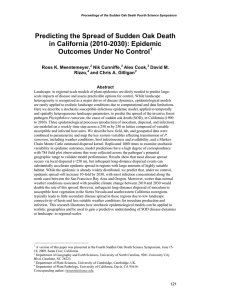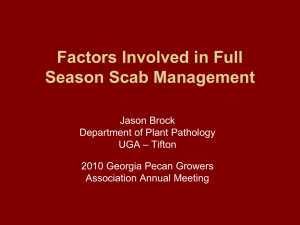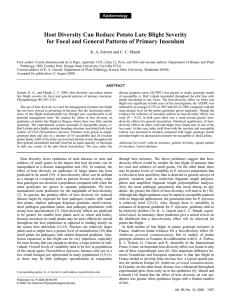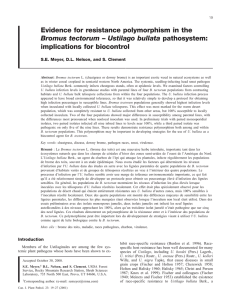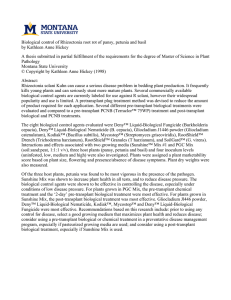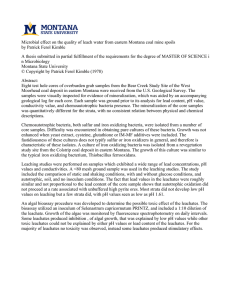P. ramorum Identifies Spatio-Temporal Patterns of Pathogen
advertisement
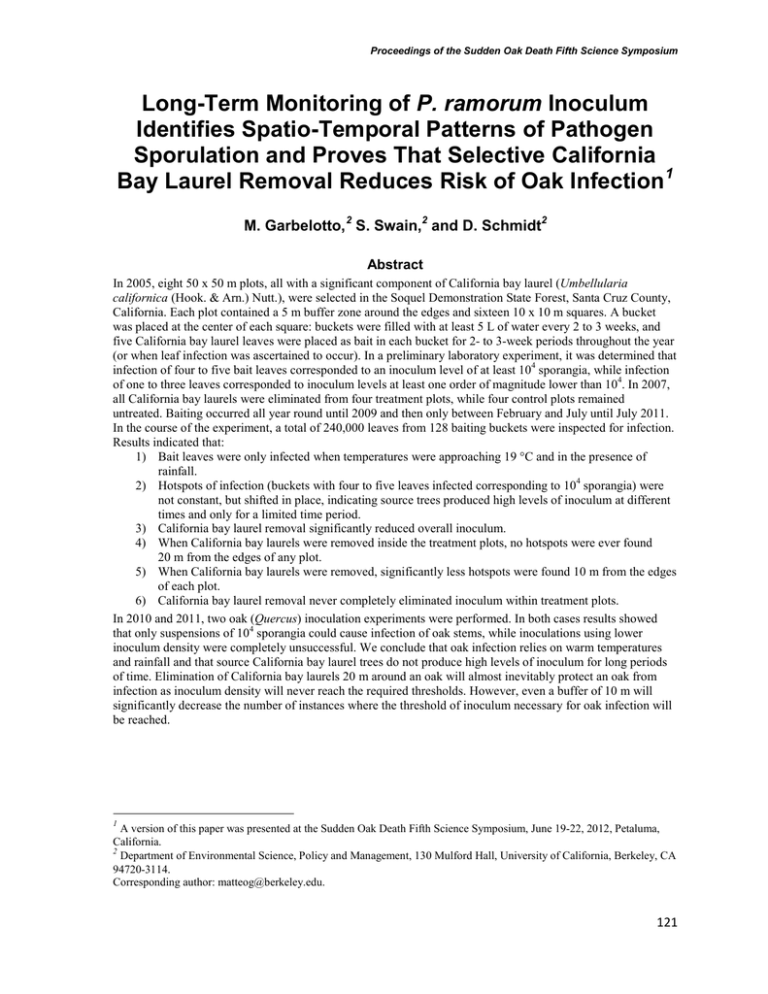
Proceedings of the Sudden Oak Death Fifth Science Symposium Long-Term Monitoring of P. ramorum Inoculum Identifies Spatio-Temporal Patterns of Pathogen Sporulation and Proves That Selective California Bay Laurel Removal Reduces Risk of Oak Infection1 M. Garbelotto, 2 S. Swain,2 and D. Schmidt2 Abstract In 2005, eight 50 x 50 m plots, all with a significant component of California bay laurel (Umbellularia californica (Hook. & Arn.) Nutt.), were selected in the Soquel Demonstration State Forest, Santa Cruz County, California. Each plot contained a 5 m buffer zone around the edges and sixteen 10 x 10 m squares. A bucket was placed at the center of each square: buckets were filled with at least 5 L of water every 2 to 3 weeks, and five California bay laurel leaves were placed as bait in each bucket for 2- to 3-week periods throughout the year (or when leaf infection was ascertained to occur). In a preliminary laboratory experiment, it was determined that infection of four to five bait leaves corresponded to an inoculum level of at least 104 sporangia, while infection of one to three leaves corresponded to inoculum levels at least one order of magnitude lower than 104. In 2007, all California bay laurels were eliminated from four treatment plots, while four control plots remained untreated. Baiting occurred all year round until 2009 and then only between February and July until July 2011. In the course of the experiment, a total of 240,000 leaves from 128 baiting buckets were inspected for infection. Results indicated that: 1) Bait leaves were only infected when temperatures were approaching 19 °C and in the presence of rainfall. 2) Hotspots of infection (buckets with four to five leaves infected corresponding to 104 sporangia) were not constant, but shifted in place, indicating source trees produced high levels of inoculum at different times and only for a limited time period. 3) California bay laurel removal significantly reduced overall inoculum. 4) When California bay laurels were removed inside the treatment plots, no hotspots were ever found 20 m from the edges of any plot. 5) When California bay laurels were removed, significantly less hotspots were found 10 m from the edges of each plot. 6) California bay laurel removal never completely eliminated inoculum within treatment plots. In 2010 and 2011, two oak (Quercus) inoculation experiments were performed. In both cases results showed that only suspensions of 104 sporangia could cause infection of oak stems, while inoculations using lower inoculum density were completely unsuccessful. We conclude that oak infection relies on warm temperatures and rainfall and that source California bay laurel trees do not produce high levels of inoculum for long periods of time. Elimination of California bay laurels 20 m around an oak will almost inevitably protect an oak from infection as inoculum density will never reach the required thresholds. However, even a buffer of 10 m will significantly decrease the number of instances where the threshold of inoculum necessary for oak infection will be reached. 1 A version of this paper was presented at the Sudden Oak Death Fifth Science Symposium, June 19-22, 2012, Petaluma, California. 2 Department of Environmental Science, Policy and Management, 130 Mulford Hall, University of California, Berkeley, CA 94720-3114. Corresponding author: matteog@berkeley.edu. 121



